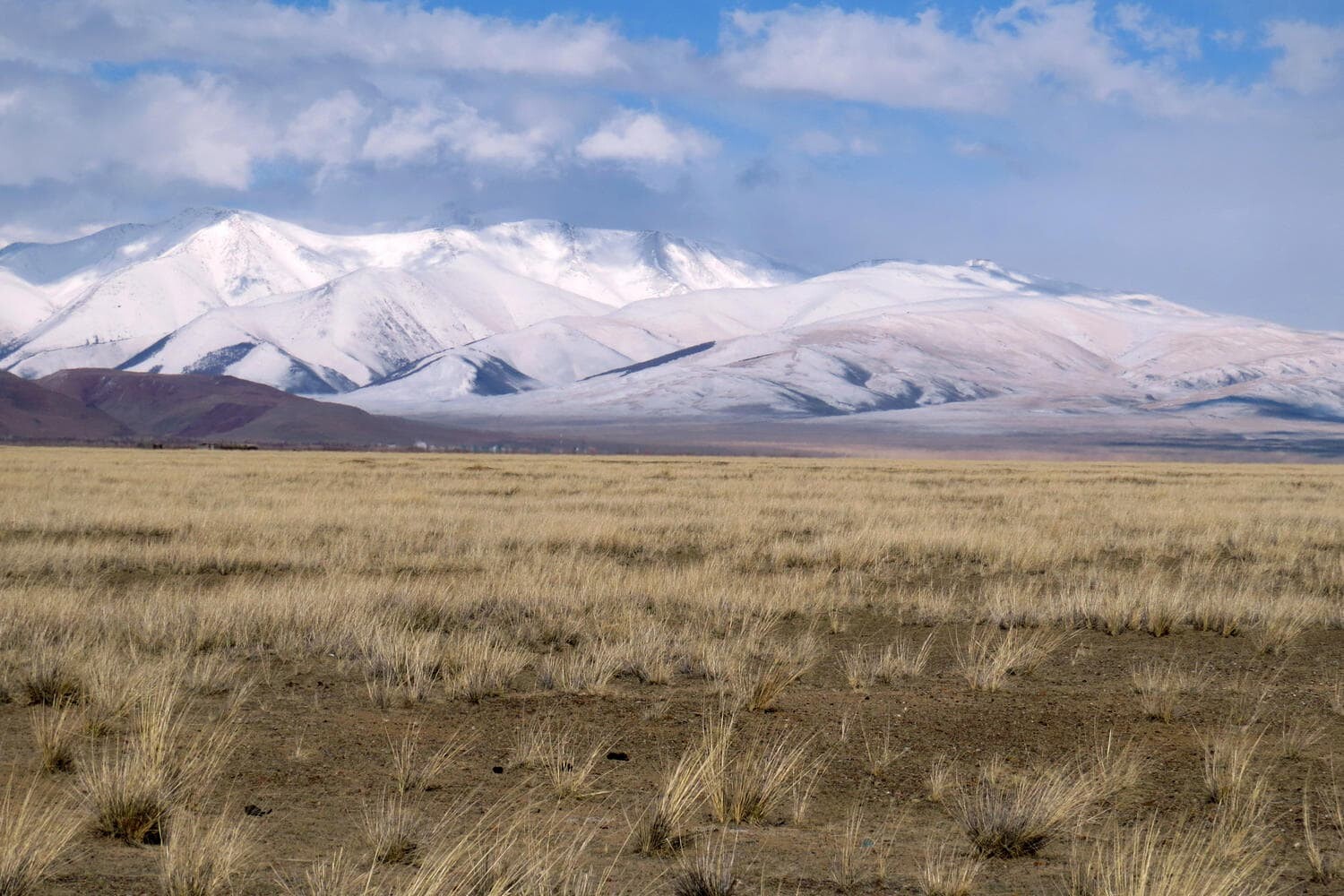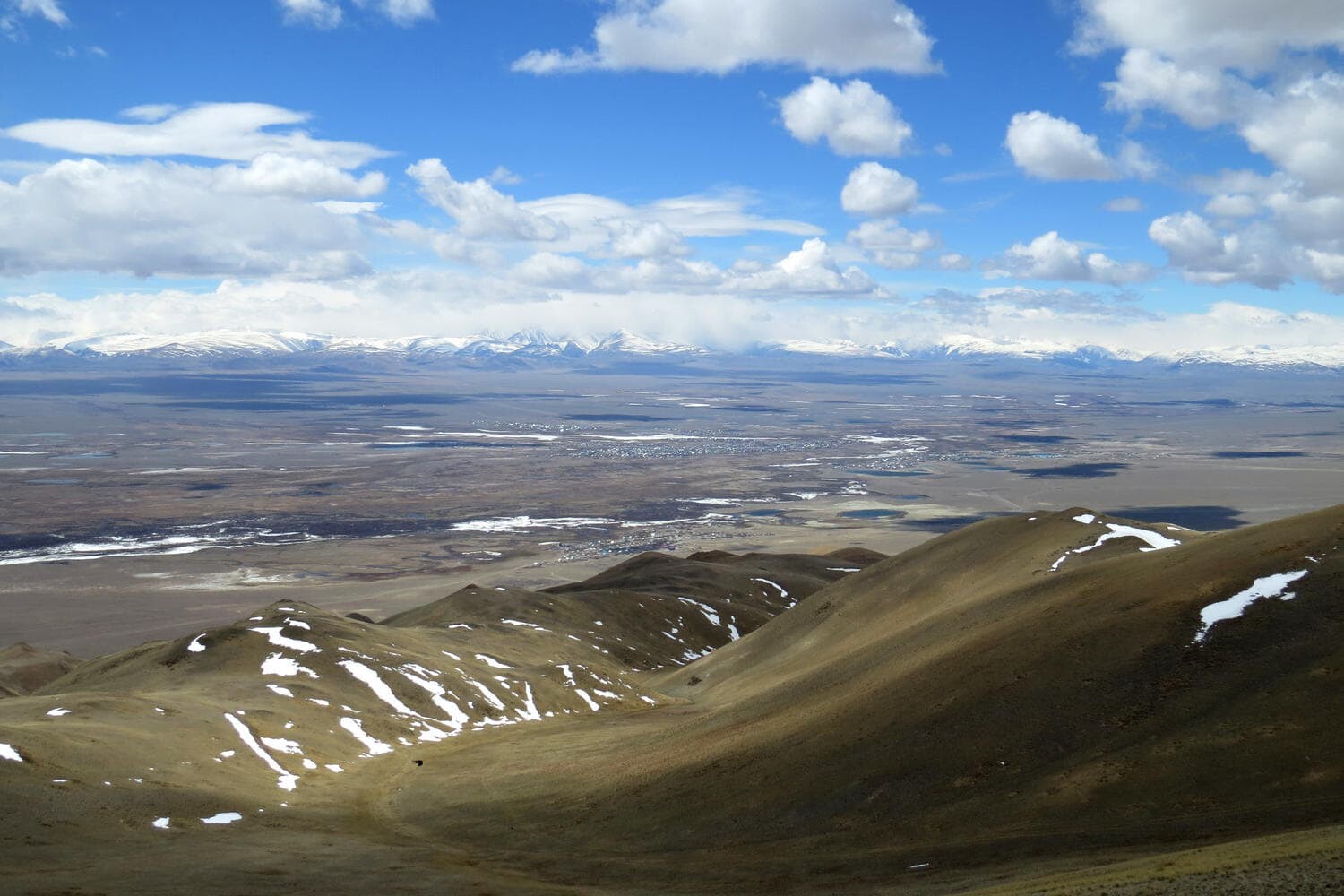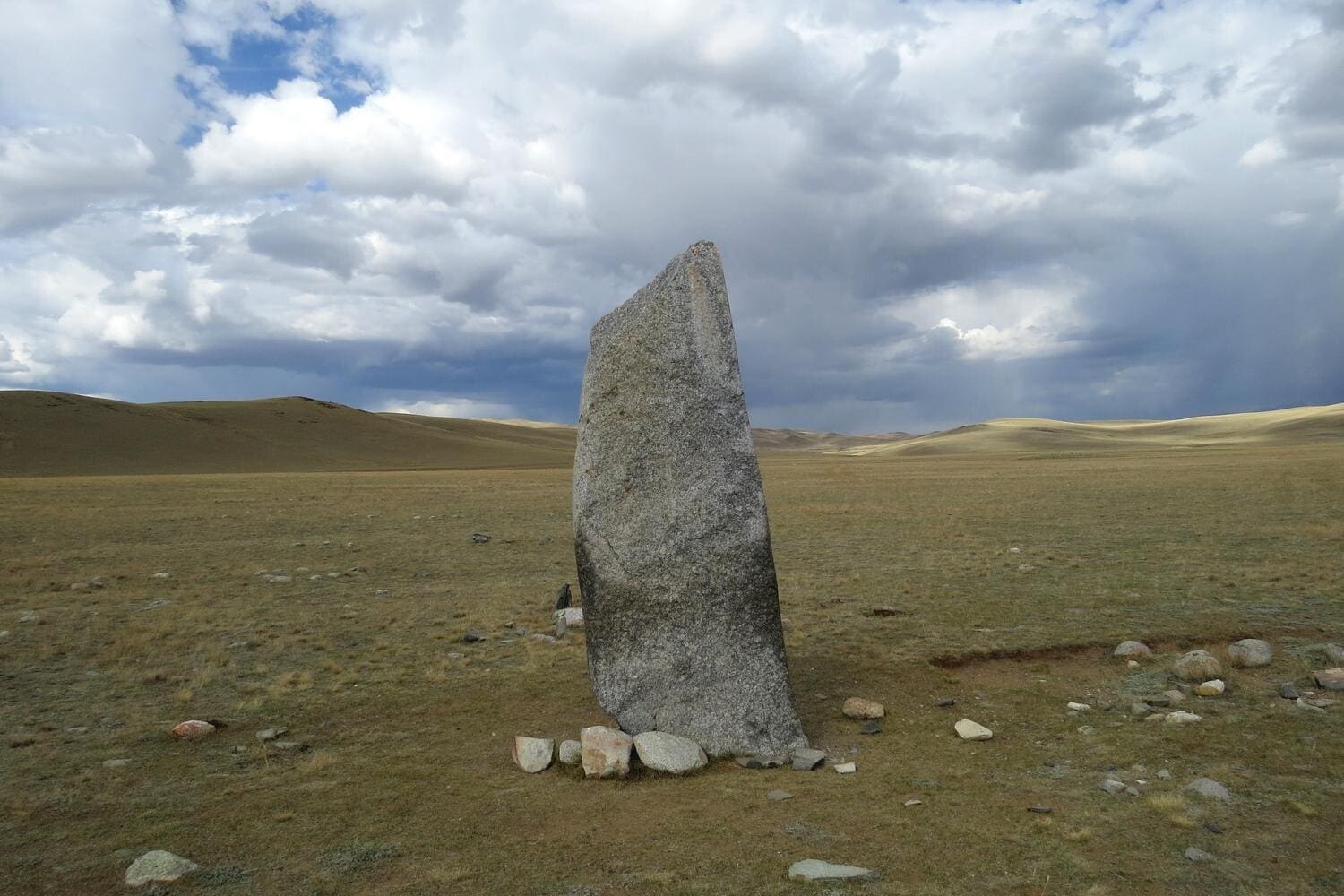The main river in the basin is Chuya which gave the name to the whole steppe. The river Chuya and its side-streams have a relatively calm flow on the Chuya steppe. Many small lakes can be found, and some of them are salted. Scientists have found therapeutic muds in them which can be used in health resort treatment.
Because of the lack of the precipitation (80-150 mm per year) there is no lush greenery here. Drought- and salt tolerant plants dominate here. Among the few species of plants you will find sagebrush, feather grass, coach-grass and sedge. That makes the steppe coloured in all tinctures of brown and yellow.
Fauna of the Chuya steppe is very specific. Many endangered animals such as antelopes, foxes
In the Chuya Steppe one can see such rare species of birds as Imperial Eagle, Black Vulture,
A great number of archeological monuments are located in the Chuya steppe. Different interesting sites of paleolith, monuments of the Bronze and the Iron Ages – burial mounds, stone stelaes, megaliths, rock paintings and even remains of pottery kilns and metallurgical furnaces are among them. Almost the same amount of rock paintings can be found in the Chuya steppe as in the Sahara where the richest collection of the ancient world art is considered to be and also can be compared to the Southwest of the US.


The main river in the basin is Chuya which gave the name to the whole steppe. The river Chuya and its side-streams have a relatively calm flow on the Chuya steppe. Many small lakes can be found, and some of them are salted. Scientists have found therapeutic muds in them which can be used in health resort treatment.
Because of the lack of the precipitation (80-150 mm per
Fauna of the Chuya steppe is very specific. Many endangered animals such as antelopes, foxes

Kaichi Travel
Adventure travel, nature tours to Altai – one of the most beautiful places in Siberia.
© 2018 by Kaichi Travel Privacy Policy Cookie Policy Booking Terms & Conditions
Info
Our tours
Follow us
tel.: +31 645466537
e-mail: [email protected]
